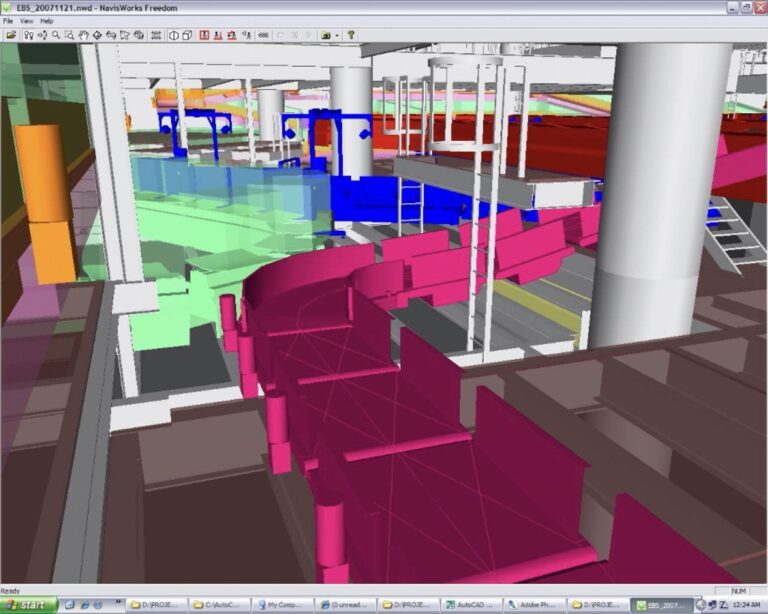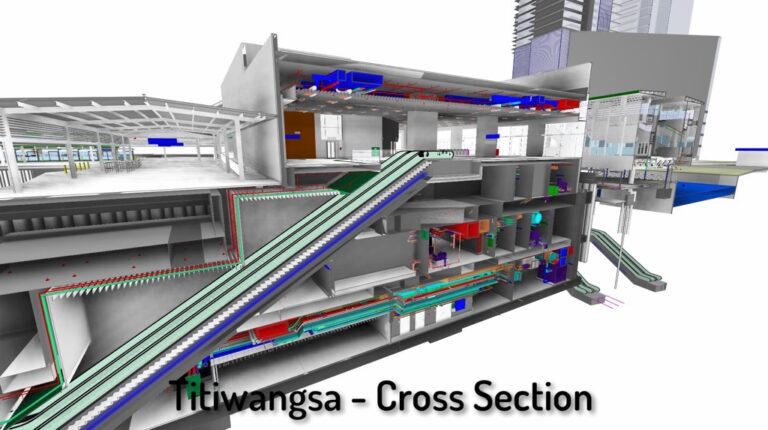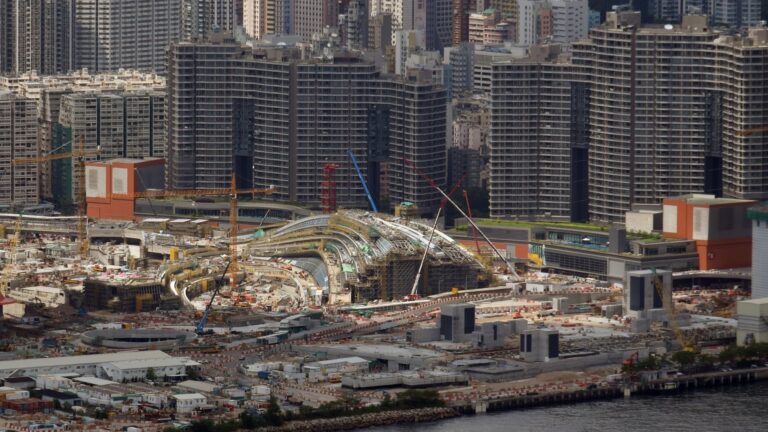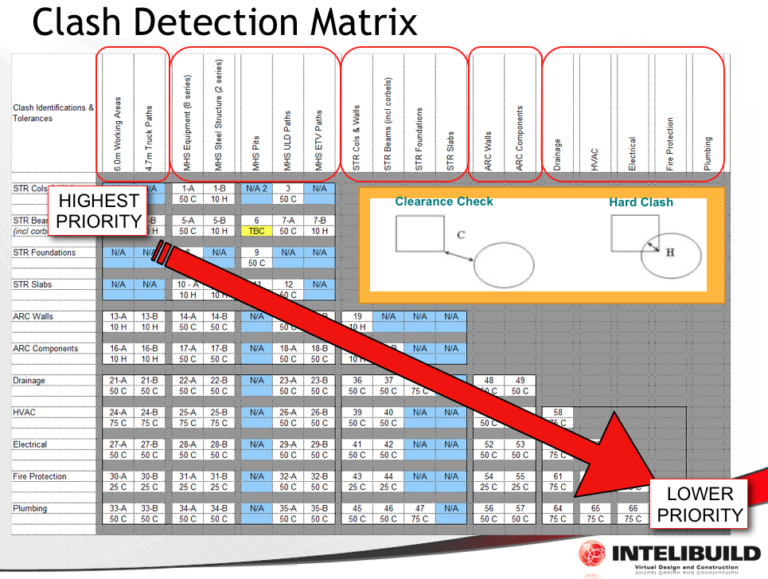In the past, building design and construction heavily depended on two-dimensional drawings. However, in recent years, advancements in technology have changed all of this. The process of utilising three-dimensional modeling for property development, commonly referred to as building information modeling (also abbreviated BIM), is beginning to transform the way building designs are created, communicated and constructed. One company that is successfully pioneering the adoption of this highly-efficient and cost-effective process is InteliBuild.
Having completed projects in Hong Kong, Macau, China, South-East Asia, Europe, Australia and the Middle East, InteliBuild has built an impressive portfolio of some of the most high profile and large-scale property developments in the world, including the Hong Kong Convention & Exhibition Center, Qatar National Convention Centre and Guangzhou TV & Sightseeing Tower.
Over the past five years, InteliBuild has established a solid track record, working on international landmark projects, ranging from commercial, residential, and institutional developments to infrastructure and transport projects. Its success has enabled InteliBuild to become one of the leading BIM providers in the region.
Ronan Collins, Managing Director of InteliBuild, describes the company’s product as a “virtual building” in which there are several key direct and indirect benefits for property development companies, designers and contractors. Direct benefits include the ability to foresee problems that may arise during construction. The 3D digital model provides a highly accurate view of the entire project in which physical aspects of the building can be assessed for fit. “With the technology, you can reduce the number of problems in a design so you can actually identify the area where there are design co-ordination issues,” according to Collins. “We look at all the different design components and check whether they are actually fitting into the building or whether there are design discrepancies.”
For example, the model may help to understand layout of mechanical systems and whether ducts and pipes can connect into the appropriate equipment. “You can fix every clash so when you’re building, you’re only building one time,” says Collins. “If you’re not having to rebuild anything, you’re not having to spend any extra money. You can save 5% to 10% of the construction costs simply from managing the construction process more effectively.”
By saving companies at least 5% on construction costs, the argument for BIM is compelling, especially with large-scale developments. Indirect benefits relate to the process of communicating building plans to various parties involved.
“When clients can see and understand where the doors are, where the escalators are, they will make key decisions earlier. You don’t have to make allowances for design changes in the construction budget”
Ronan Collins
The contractor can deliver the project on time or even earlier than expected and this can translate into revenues. For example, if a building can be completed 10 days ahead of schedule, that building can potentially collect 10 days additional commercial rents. In addition, the accuracy of the 3D models reduces insurances, overheads and claims.
InteliBuild’s model is also able to directly link into construction programs, which enables tight integration of the design and construction efforts and contractors can see how to actually build a building with detail as specific as how the building phases will look. Facilitating the communication between the design team and the construction team enhances the efficiency of the whole project while minimising the possibility of misunderstandings and miscommunication.
InteliBuild’s team consists of industry professionals with years of practical experience in architecture, multi-disciplinary engineering design and construction management as well as in 3D technologies, such as animation. With its depth of experience, InteliBuild is able to effectively work alongside a client’s architectural design team and construction team to insure a smooth running of the BIM process from beginning to end.
Beyond building construction, 3D models provide insight into building operations never seen before. Sustainability of a property can be analysed in such a way that ongoing operating revenues and costs can be estimated for a building even before construction has commenced. For example, by specifying a number of known parameters into the Green BIM model, energy costs can be estimated for each room in a building based on variables, such as the type of building and size of rooms. Analysis such as this can provide essential financial information to decision-makers at the highest level.
“We can calculate the annual energy use of a building for different design options thus enabling clients to assess the sustainability of a proposed layout.”
Ronan Collins
Last month, due to their achievements in this innovative process, InteliBuild was awarded the 2008 BIM Award by Autodesk for their work on the Cathay Pacific Cargo Terminal project. This massive multi-billion dollar project aimed to showcase and strengthen the position of the Hong Kong International Airport as a leading air cargo and logistics hub. The complex nature of the project demanded precise co ordination of the building structure, architecture and building services systems, which only the BIM methodologies and processes developed by InteliBuild could deliver.
“It’s very exciting for us. We’re getting recognised for what we’ve been doing for more than two years on this project”
Ronan Collins
The Cathay Pacific Cargo Terminal project is an example of how BIM takes an extraordinary amount of data and produces an accurate and useful model with which key decisions can be made. “This job is probably the biggest adoption of the technology in a single contract. We have a complete model of all of the cargo systems, all of the mechanical systems, all of the structural systems, all of the architectural systems,” says Collins. “We’ve actually got models of the operational environment required by the client. We have simulated truck maneuvers within a certain space, so that we don’t put fire hoses, sprinkler heads or ventilation ducts in the way.”
Although the adoption of BIM in Asia is slightly behind that of North America and Europe, Collins believes that this will change in the coming years. He believes that, similar to what has happened in other industries, Asia will catch up very quickly in its adoption of BIM.
“In Hong Kong, the outlook is bright, certainly for the next three to five years”
Ronan Collins
Prominent Hong Kong projects that InteliBuild has provided BIM services include Phase 3 of the Hong Kong Convention & Exhibition Center, the KCRC Kowloon Southern Link and the enhancement of the baggage handling services at the Hong Kong International Airport. Nearby Singapore is the company’s next target market.
“We’re looking at Singapore as our next consultancy market. Singapore’s got some amazing projects for the next five years, similar in scale to Hong Kong”
Ronan Collins
In addition, InteliBuild already has interests in the Philippines and Malaysia. In the Middle East, InteliBuild has also been active on major construction projects. For the Qatar National Convention Centre, the largest facility of its kind in the Middle East, InteliBuild are providing services that facilitate the co-ordination of the complex building services with the structural steel frame and architectural finishes. Another project involved the Al Maha Five Star Sofitel Hotel in Qatar, in which InteliBuild provided 3D models to identify clashes and conflicts, allowing designers and engineers to revise and co-ordinate the building systems as necessary.
In China, InteliBuild has developed a presence by providing expert consultancy services to developers. Recently, InteliBuild was commissioned to produce an animation to show the buildability of the Guangzhou TV & Sightseeing Tower, a landmark that aims to be fully operational for the 2010 Asian Games. As companies in the property and construction sector warm up to the application of technology and recognize the need for greater efficiency and cost savings, companies such as InteliBuild will benefit. As a pioneer of BIM in the region, InteliBuild is well on its way to becoming a leader in this innovative field.
Cathay Pacific Cargo Endorsement
Planning for Cathay Pacific’s Air Cargo Terminal began in 2005. We recognised at an early stage that for this project to be successful required clear early identification of operational methods translating into material handling systems that achieve throughput and diversity requirements. We realised that only having reached this stage could we begin to plan the layout of the Terminal Building and once we began the design process, accurate definition of the project in 3D became a priority for CX and its design team.
Ian Hunt, Project Director, Cathay Pacific Cargo
At the outset a number of materials handling systems (MHS) conceptual configurations were considered. It quickly became apparent that one of these offered optimal throughput performance and this was selected for further design development. It was some months before a structural grid was fixed and the building design began to wrap itself around the MHS.
At HKIA Design Stage C, InteliBuild produced their first 3D model of the Terminal. This incorporated MHS layouts in the form of spatial envelopes, structural and MEP zones. The model at this stage of development enabled CX’s cargo team to understand the design and to further develop MHS and other operational interfaces.
As the design developed, the 3D model evolved to incorporate greater detail and clash analysis began to be rigorously undertaken. At Stage D all structural members, MHS layouts (based on generic component dimensions) and MEP zoning were all modelled. In 2007, the MHS was tendered and it was a tender condition that all bidders must submit a 3D model of layouts incorporating their own component dimensions. MHS compatibility with the building could be assessed with the tenders and this was a considerable factor in our tender evaluation.
Siemens were awarded the MHS contract in December 2007 and since then they have continued to finalise their 3D model. InteliBuild have simultaneously continued developing the overall BIM model so that at the time of Main Contract award [October 2008] the design will be developed to the level of combined service drawings and with an integrated design that is coordinated substantially de-clashed.
We expect that the benefits of 3D modelling will enable fast and accurate construction, installation and commissioning. We are working to a tight programme that would probably be unachievable without such a design tool. Upon award, the main contractor will take responsibility for the BIM to ensure that all sub-contractor designed elements are right first time and fully integrated into the Terminal. We expect that opportunities for modularisation and pre-assembly of installed components can be maximised using BIM, further enhancing speed and accuracy of installation and providing cost savings to CX. In addition, we expect our contractor to use BIM as a planning tool to test and develop complex multi-discipline installation sequences.
We believe that 3D design is an essential tool for a project such as ours. Its introduction has required a commitment from designers and contractors and at times we have had to insist that sliding back to 2D methods is just not acceptable. Now all parties are able to see the benefits of BIM and I believe that for most of us there is no going back.
We are delighted that InteliBuild were winners in the 2008 BIM awards. This is well deserved for their pivotal role in helping us to define this complex and technically demanding project.





